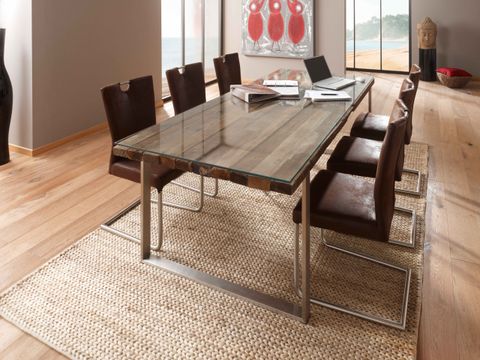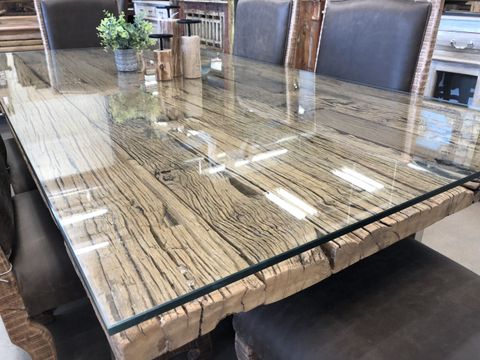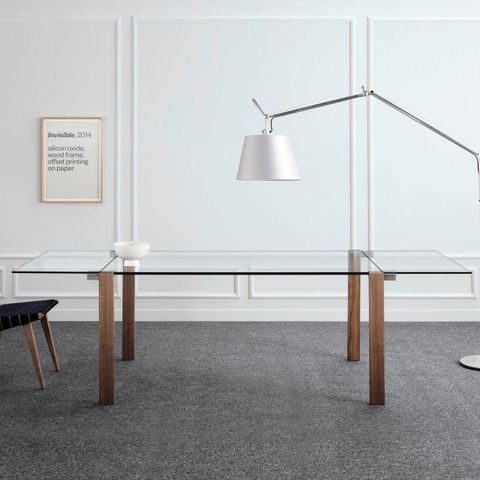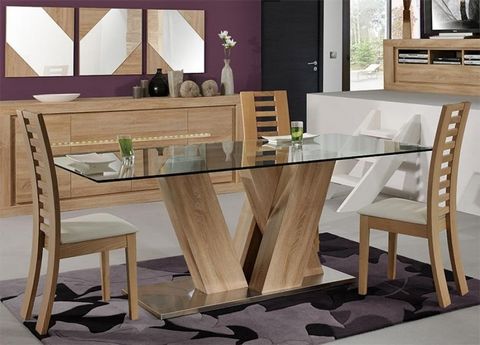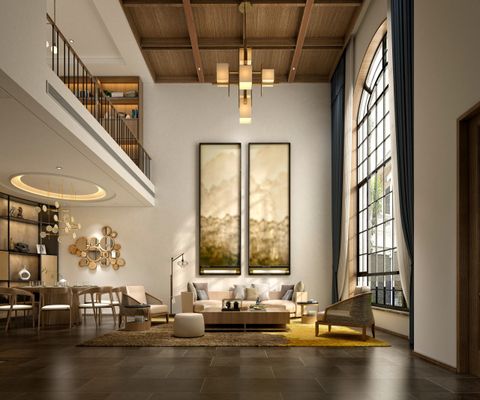Picture this: you’re sitting around a beautifully crafted table, surrounded by family and friends, sharing meals and stories. That moment of connection starts with one crucial decision – choosing the right dining table. Whether you’re drawn to the warmth of wood or the sleek elegance of glass, finding the perfect blend of form and function can transform your dining experience.
The dining room is often considered the heart of the home, and the table sits at its center. It’s where memories are made, conversations flow, and meals become celebrations. But with so many options available, how do you choose the right wood and glass dining table? The truth is, there’s no one-size-fits-all answer. Your choice depends on several factors including your space, how you entertain, your personal style, and even your budget. This guide will walk you through everything you need to know to make an informed decision that brings joy to your home for years to come.
Understanding Wood Dining Tables
Wood tables have been gracing dinner tables for centuries, and for good reason. They offer warmth, durability, and a timeless appeal that never goes out of style. When selecting a wood dining table, consider the type of wood used, as each variety has its own unique characteristics.
Different woods bring different vibes to your dining space:
• Oak – Sturdy and classic, oak tables are excellent for families with children or pets. They can handle daily wear and tear well.
• Maple – Known for its smooth surface and light color, maple creates a bright, airy feel in your dining room.
• Walnut – Rich and luxurious, walnut tables add sophistication and depth to any space.
• Pine – A more affordable option, pine offers a rustic charm but requires more maintenance.
Wood tables often age beautifully, developing a patina that tells the story of your family’s meals and gatherings. They’re also incredibly versatile, fitting into various design styles from farmhouse to traditional.
Exploring Glass Dining Tables
Glass tables offer a completely different aesthetic experience. They create an open, airy feeling in any room and are particularly popular in smaller spaces. The transparency of glass makes them seem almost weightless, drawing the eye upward and making rooms appear larger.
Glass tables come in various forms:
• Tempered glass – The most common and safest option, tempered glass is much stronger than regular glass and won’t shatter into sharp pieces.
• Laminated glass – Offers extra safety and sound dampening properties.
• Tinted or frosted glass – Adds privacy while maintaining the light-filled feeling.
One major advantage of glass tables is their easy maintenance. A quick wipe down keeps them looking pristine. However, they show fingerprints and water marks more easily than wood surfaces. Glass tables also tend to be more fragile and require careful handling, especially if you have young children or pets.
Consider the overall style of your home when choosing glass. Modern and contemporary spaces often embrace glass tables beautifully, while traditional homes might prefer wooden alternatives.
Measuring Your Space and Needs
Before diving into design choices, take a careful look at your actual space. Measure everything carefully – the length, width, and height of your dining area. Consider how much room you need for chairs to move around comfortably.
Here’s what to think about:
• Room size matters – In small spaces, a glass table can make the room feel bigger, while a large wood table might overwhelm a tiny dining area.
• Seating capacity – Think about how many people typically dine together. A 6-person table works well for most families, but if you entertain frequently, consider a larger option.
• Traffic flow – Leave at least 36 inches of clearance around your table for comfortable movement.
• Ceiling height – Tall ceilings allow for longer table legs, while lower ceilings may require shorter tables.
Your lifestyle also plays a big role. If you’re a frequent entertainer, you’ll want a table that can accommodate guests comfortably. If you prefer intimate dinners, a smaller table might be more suitable. Don’t forget to account for seasonal changes – do you need to store extra chairs during winter months?
Considering Your Lifestyle and Family Dynamics
The right table isn’t just about aesthetics – it’s about functionality that matches your daily routine. Think about your family’s habits and needs.
Key considerations:
• Children and pets – Wood tables are generally more forgiving against scratches and dents from active kids and curious pets. Glass tables require more careful handling and may need protective coasters or placemats.
• Entertaining habits – If you host parties regularly, you might prefer a larger table that can handle extra guests and serving platters. A smaller table works better if you mostly enjoy quiet family dinners.
• Maintenance requirements – Wood tables often need periodic refinishing or polishing to maintain their appearance. Glass tables require less ongoing care but need gentle cleaning to avoid streaks.
• Daily usage patterns – Do you eat at the table every day? Or is it reserved for special occasions? This affects whether you want something more durable or something that looks beautiful but might not withstand heavy daily use.
The emotional aspect shouldn’t be overlooked either. You want a table that makes you feel happy and relaxed when you sit down to eat. Does the wood grain remind you of cozy family gatherings? Or does the clean lines of glass make you feel refreshed and energized?
Style and Design Compatibility
Your dining table should complement your existing décor rather than clash with it. Take time to assess your current style and decide what direction you want to go.
Popular design styles include:
• Modern minimalist – Clean lines, simple shapes, often featuring glass or sleek metal bases
• Traditional – Ornate details, rich wood tones, classic proportions
• Farmhouse – Rustic elements, reclaimed wood, warm colors
• Industrial – Raw materials like steel and exposed brick elements
When matching your table to your space:
• Look at your flooring, wall colors, and existing furniture for inspiration
• Consider the overall mood you want to create – cozy and intimate or bright and open
• Think about how the table will work with your lighting fixtures
• Don’t forget about accessories like tablecloths, centerpieces, or napkins that will enhance the look
Remember, a well-chosen table can actually define or elevate your entire room’s aesthetic. It’s not just a piece of furniture; it’s a statement about your taste and personality.
Budget and Quality Considerations
Tables range dramatically in price, from affordable options to luxury pieces that cost thousands of dollars. Setting a realistic budget helps narrow down your choices.
Important budget factors:
• Material costs – Generally, wood tables cost more than glass ones, especially if they’re made from premium hardwoods
• Construction quality – Check joints, finishes, and hardware carefully. Poor construction leads to problems later
• Brand reputation – Established brands often provide better warranties and customer service
• Where to shop – Retail stores, online retailers, custom makers, and estate sales all offer different value propositions
Quality indicators to look for:
• Solid construction with reinforced joints
• Smooth, even finish without rough spots
• Proper weight for stability
• Good craftsmanship in edges and corners
• Warranty coverage for defects
Keep in mind that investing in a quality table pays off over time. A well-made piece can last decades and even become a family heirloom. Sometimes spending a bit more upfront means avoiding replacement costs down the road.
Choosing the right wood and glass dining table is ultimately about finding something that feels right for your life, your space, and your family. There’s no perfect answer, but by considering factors like your room dimensions, lifestyle needs, design preferences, and budget, you can make a confident choice. Whether you’re drawn to the natural beauty of wood or the contemporary appeal of glass, the most important thing is that the table becomes a place where you and your loved ones gather, share meals, and create lasting memories. Remember, the best table isn’t necessarily the most expensive or trendy – it’s the one that fits perfectly into your life and brings joy to your everyday moments. Take your time with this decision, trust your instincts, and enjoy the process of bringing that perfect dining table into your home.

